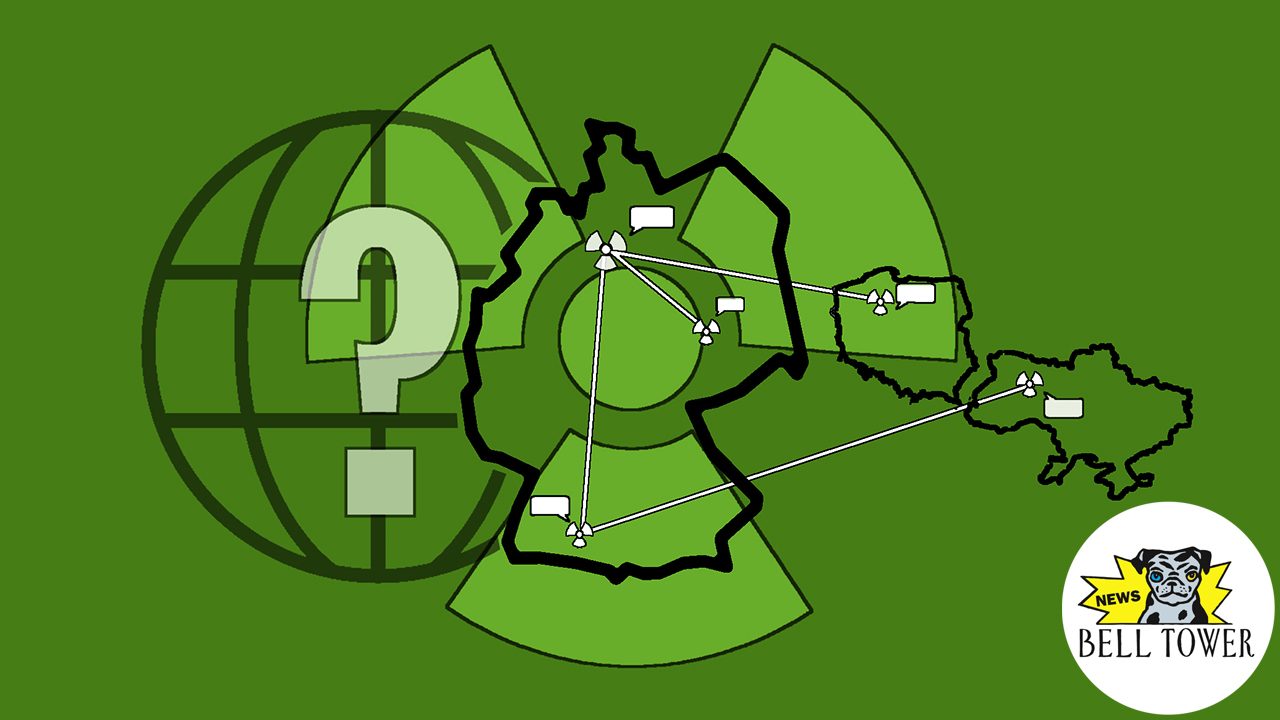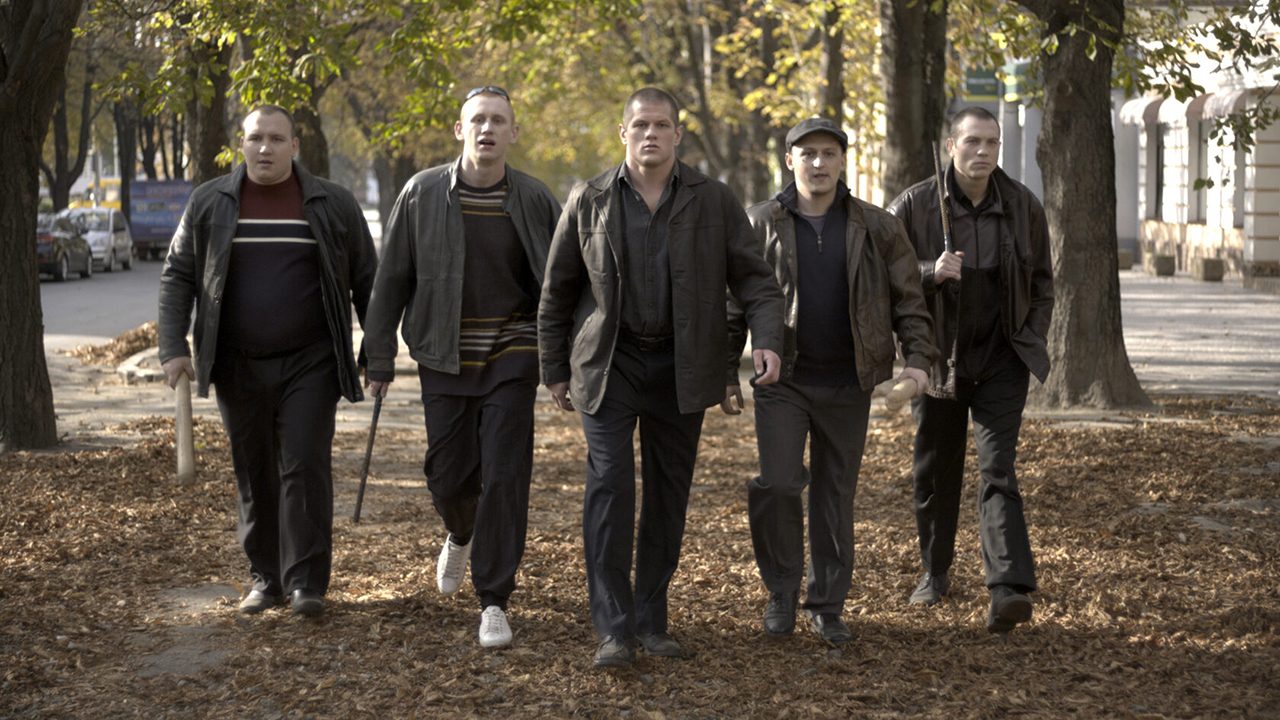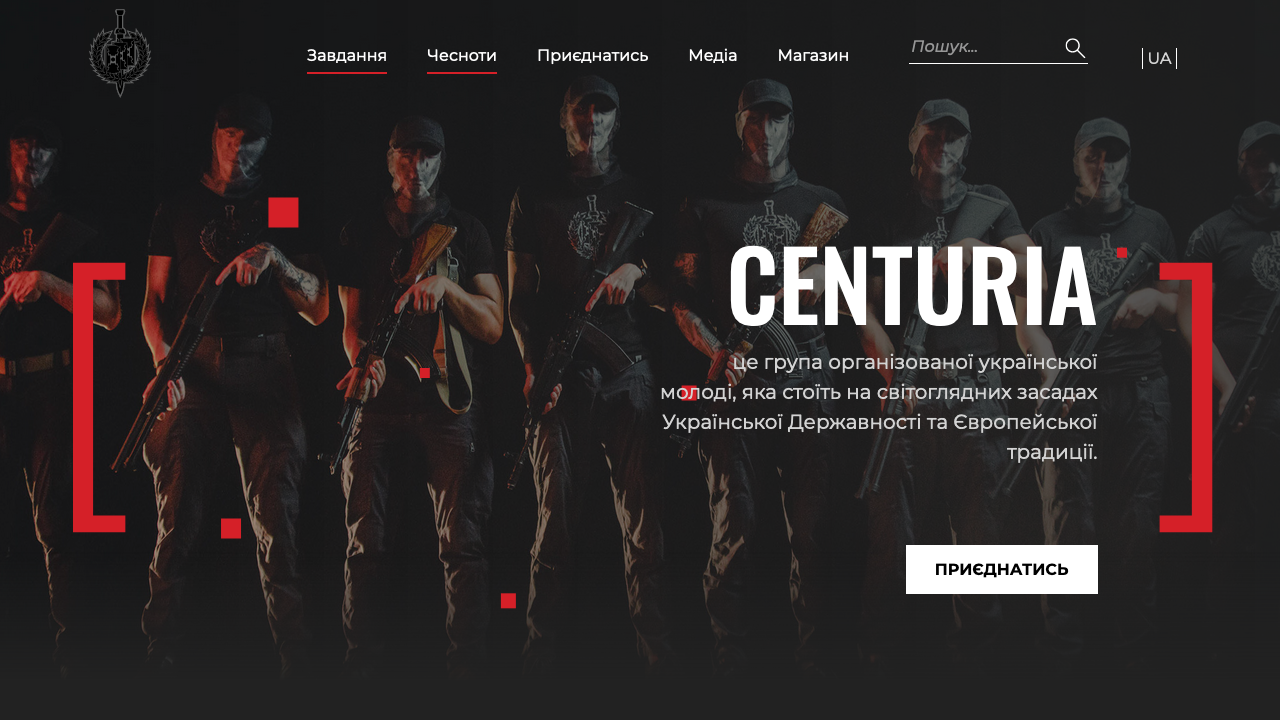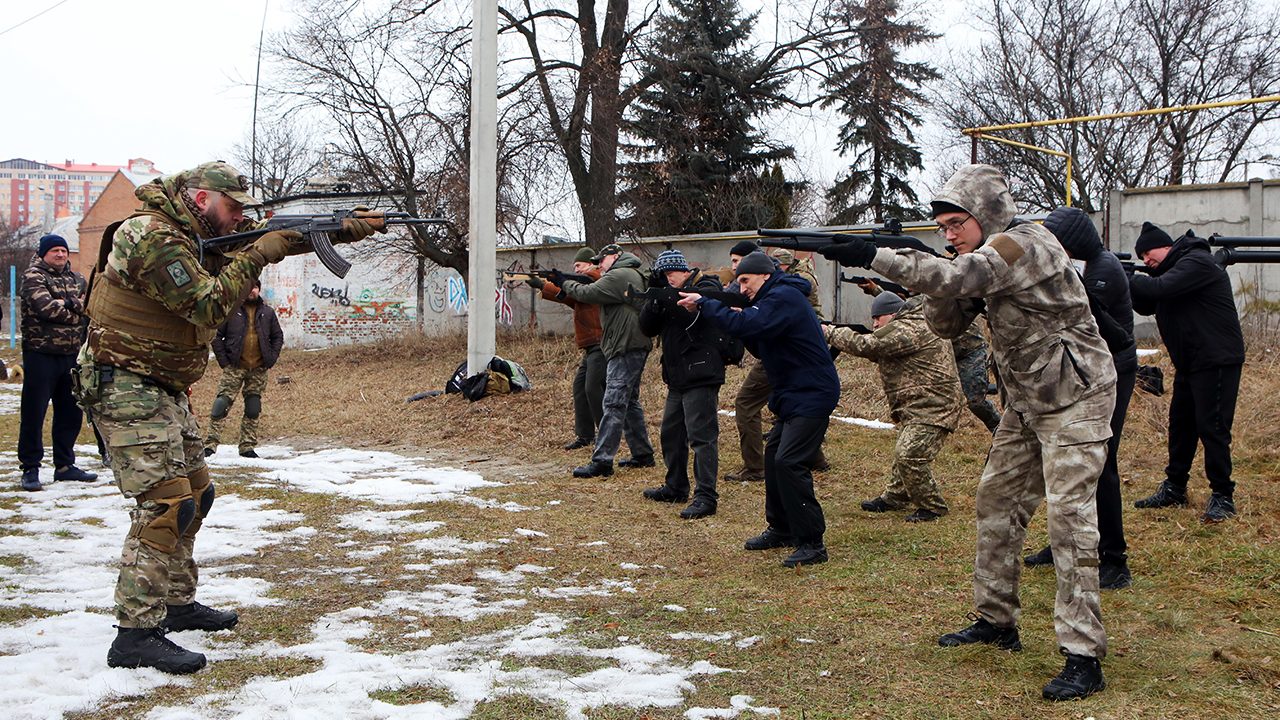
The Canadian journalist Michael Colborne leads Bellingcat Monitoring and was, until recently, Policy and Practitioner Fellow at the Centre for the Analysis of the Radical Right (CARR). He researches and writes about the far right in central and eastern Europe. His articles have appeared in Haaretz, Al Jazeera and The New Republic. His book From the Fires of War: Ukraine’s Azov Movement and the Global Far Right will be released in March 2022.
This interview is also available in German.
Belltower.News: Putin has formally recognized the separatist regions of Donetsk and Luhansk as independent nations and has sent Russian troops on a “peacekeeping” mission. Europe is on the brink of war. What does this mean for the far right in Ukraine?
Michael Colborne: Azov is the primary far-right movement in Ukraine and has consolidated its presence to the point that little exists outside of it: first as a voluntary battalion, then as a street vigilante group and political party. And it’s taking advantage of the current situation. The Azov Regiment has put out an appeal to recruit soldiers, as well as sharing its banking information for donations. It also wants to present itself as a “mainstream”, patriotic player. The narrative is, they’re veterans who know what they’re doing. For the past month, Azov has been heavily promoting civil defence training across the country, for example at the end of January in Kyiv. More and more Ukrainians, especially in big cities, are thinking about how to defend themselves if it comes to the worst, to a full scale invasion.
The fact that Azov is a far-right movement doesn’t pose a problem for them?
They take part in Azov trainings not because they’re happy to hang out with a far-right group, but because they either don’t know or, in light of the situation, don’t care. Perhaps they believe the soft media coverage of Azov in Ukraine and don’t think they’re far-right at all.
Would war be beneficial for Azov?
Azov owes its very existence to war. Without it, there would be no Azov. That’s the reason I titled my book From the Fires of War – a line from “March of Ukrainian Nationalists”, written in 1929, which was adopted as the anthem of the far-right Organisation of Ukrainian Nationalists. An altered version was adopted as the Ukrainian army’s official march in 2018. But I think there are also many people within Azov who do not necessarily strive for a real war. I don’t think most of them are that cynical. But, if it does come to war, they would welcome it. They see war as an opportunity on a number of levels.
In your book, you call Azov one of the most ambitious far-right movements in the world. Why is that?
At least in the past, it has been ambitious in terms of its international goals. From 2017 to 2019, it was very active in networking with far-right movements in other countries – including Germany with for example Der III. Weg (The Third Path). But two factors really curtailed these international ambitions. Firstly, terror attacks as in Christchurch really increased international focus on the issue of far-right extremism and terrorism – bringing with it increased scrutiny, not all of it even deserved, to be frank. Because the way the Christchurch killer was linked to Azov wasn’t exactly true, even if his manifesto used similar language and symbols and Azov members spoke positively of him. But this increased international pressure. Secondly, the pandemic also affected matters from 2020. But Azov is still well-connected with far-right movements in Estonia, Croatia and Poland.
Azov also aspires to be more than the mere voluntary battalion it was established as following the revolution and subsequent war in 2014…
Exactly. It was able to use its own affiliated military unit within the National Guard as a branding and recruitment tool around which to build a broader movement, which consists of the Azov Regiment, the National Militia (subsequently rebranded as Centuria), and the National Corps Party. This has also allowed them to operate with a degree of impunity and openness that many other far-right groups worldwide cannot.
What is their goal?
To fundamentally transform not just Ukrainian, but also European politics and society. As Olena Semenyaka, former primary international representative of the movement, told me in an interview: Azov needed “to overcome this psychological resistance to nationalist, far-right ideas” in Ukrainian society and to counteract what she described as a “demonised image of the far right”. Even if this goal is just pie in the sky, they have been able to shift the needle as far to the right as possible. Their rhetoric has become increasingly acceptable.
Some Azov members would reject the label “far right”. How would you describe their ideology?
They’re a heterogenous far-right movement that is more than happy to have a minority, of whatever size, of outright neo-Nazis and devotees of political violence within its ranks. Azov as a whole is explicitly opposed to liberal democracy. The authors who influence them, who they openly wear on their sleeves, are ultranationalist, far-right and fascist. One ideologist of the movement, for example, gave a speech in which he said voting is not a right, but a privilege. Azov also completely rejects equality of any kind – be it for ethnic minorities or LGBTQ+.
Azov has made efforts to “rebrand” itself. In 2015, they updated the logo of the Regiment, removing the “black sun” and tilting the Wolfsangel 45 degrees, as if to make them appear less neo-Nazi…
Their party National Corps is another example. Even in a coalition with other far-right parties, it can’t reach the three percent threshold in elections. But electoral politics isn’t the aim of the movement. The party is essentially the public brand of Azov. If you listen to the party’s language, it avoids extreme rhetoric, using codes instead. Andriy Biletsky, former commander of the Azov Regiment and now leader of National Corps, wouldn’t say the kinds of openly antisemitic things or use the same neo-Nazi rhetoric today as back in the 2000s. They’ve becomee more careful.
This strategy has partly worked. In the past weeks, a number of international media outlets have reported on Azov or interviewed its members without mentioning that it is a far-right movement.
On Social Media, the “Azov Granny” made the rounds: a 79-year-old woman in Mariupol who was being trained by an Azov soldier. Many Western media outlets reported without the additional context that the training was set up by the Azov Regiment. It was a photo-op for them. At the moment, a lot of international journalists are descending on Ukraine and of course there are also reporters who don’t necessarily know what the groups and their symbols are. And that’s when it comes to embarrassing gaffes.
At the same time, Russia often plays up the role of the far right in Ukraine – from the Maidan protests to the subsequent war against pro-Russian separatists. Russian media for example called the 2014 revolution a “fascist coup”.
What’s interesting now is the rhetoric coming from Russia compared with 2013 to 2014. You’re not seeing Russian state media or Kremlin propaganda explicitly talking about the far right in Ukraine in the same way. It doesn’t seem to be as central to their media narrative. Back then, they talked about specific far-right groups and individuals as threats, using the word “fascist” all the time, which evokes something very specific in Russian historical memory. Now, they use almost comical exaggerations of a “neo-Nazi government” in Kyiv or “genocide” in Donbas – ridiculous accusations that don’t hold any water. At the same time, Western media often downplayed the role of the far right.
How influential was and is the far right in the Ukraine in reality?
The far right was always a small minority within these protests. But these were young men, mostly from the far-right hooligan subculture or wannabe far-right paramilitary types, who had experience with violence, with fighting police. They were key in pushing back the most violent impulses of the Yanukovich regime. The sad reality is that mainstream society and the far right needed each other on Maidan. However much a minority, the far right was necessary to keep the protests from being crushed by police. And without mainstream society behind them, the far right would have been defeated or even killed.
Russia also has its share of neo-Nazis but several prominent figures such as Denis Nikitin or Alexey Levkin live in Ukraine. Why is that?
A lot of people don’t realise how many Russian neo-Nazis are not just in Ukraine, but on Ukraine’s side. Around 50 or more Russians served in the Azov Regiment. Many far-right Russians had already left for Ukraine before Maidan because, after initially trying to use the far right, Putin cracked down on them as he saw them as a potential source of opposition to his regime. When war broke out in Ukraine in 2014, they saw an opportunity to fight not against their mother country, but the Kremlin. Of course, they jumped at it.
What’s the future of the Azov movement?
That’s totally dependent on what happens in Ukraine and what Putin decides to do. There are many different scenarios. But if the situation escalates into a full-scale war, with far-right partisans fighting in the streets, then the consequence will obviously be death for a lot of people. It will be hell. But if, more optimistically, Putin somehow backs off a bit after the recognition of these so-called “separatist states”, then many things can happen. But either way, it’s clear that the Azov movement isn’t just going to go away. It’s too strong to be just taken out.
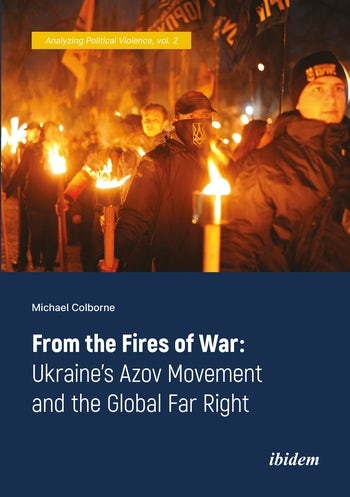
„From the Fires of War: Ukraine’s Azov Movement and the Global Far Right“
Michael Colborne
200 pages
(ibidem Press, 2022)
